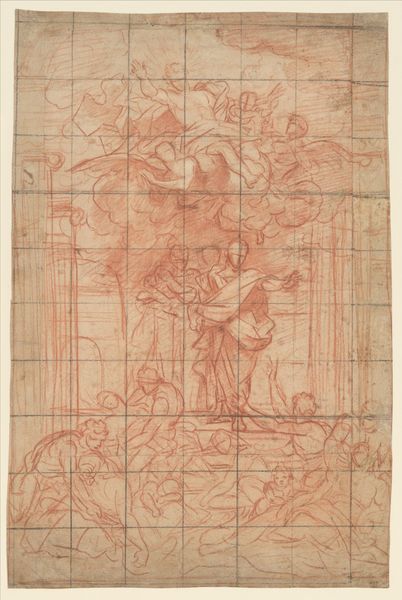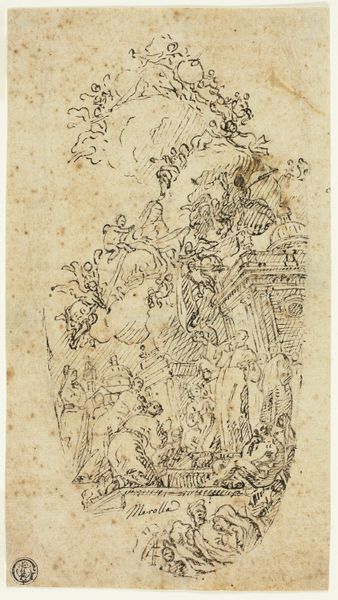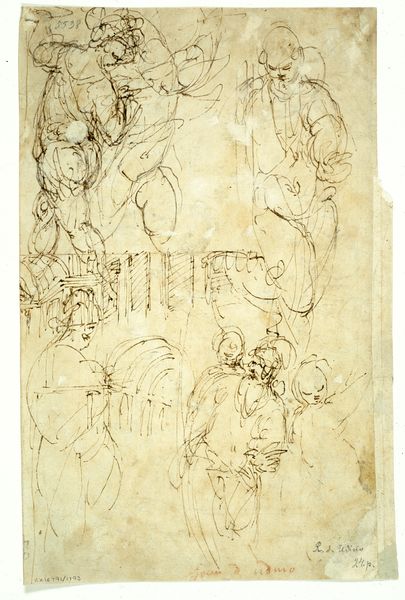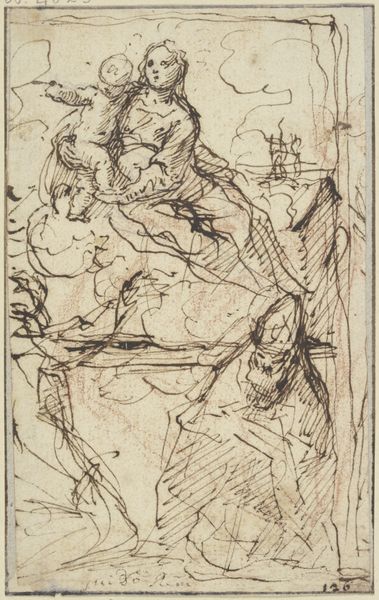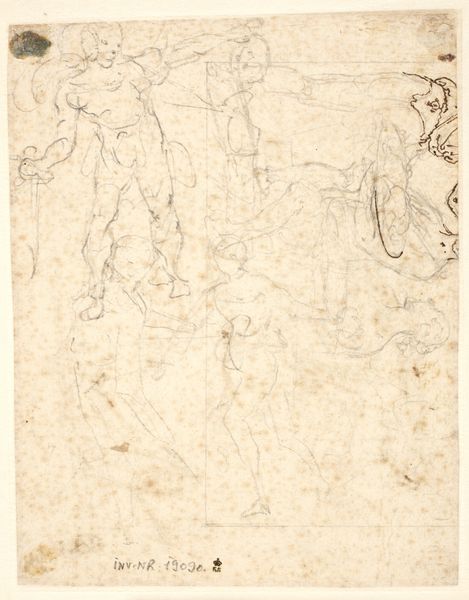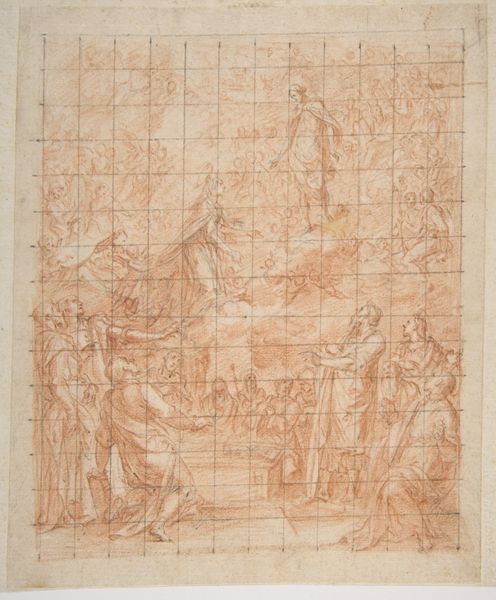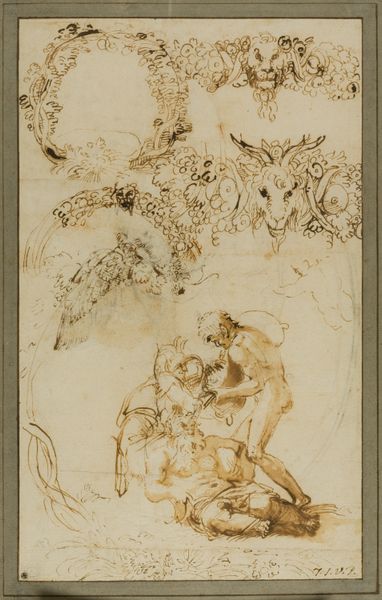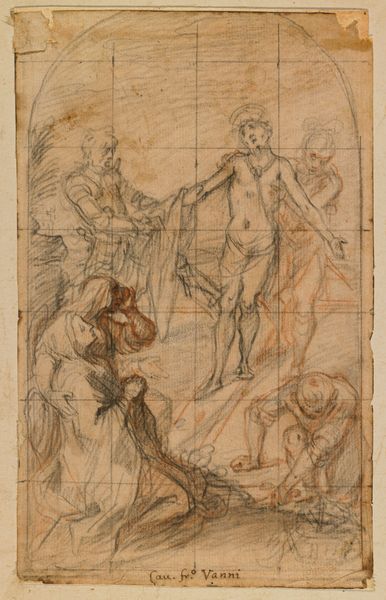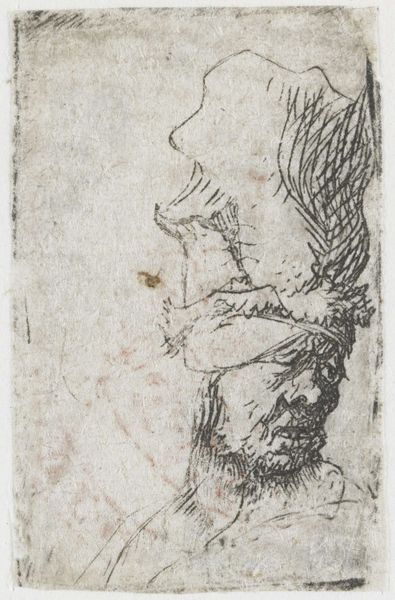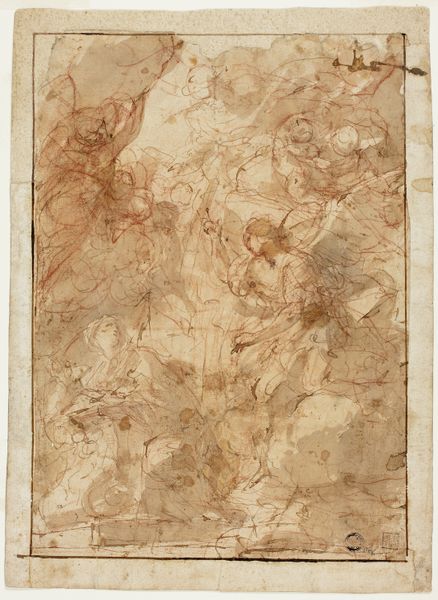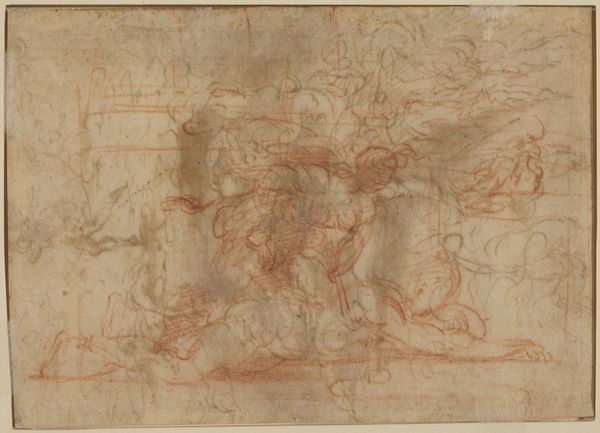
drawing, paper, ink, pen
#
drawing
#
toned paper
#
allegory
#
narrative-art
#
baroque
#
figuration
#
paper
#
ink
#
pen
#
history-painting
#
academic-art
Dimensions: 334 mm (height) x 202 mm (width) (bladmaal)
Curator: What strikes me immediately is the raw energy of this drawing, seemingly captured in the throes of artistic exploration. Editor: Indeed. We are looking at Giuseppe Passeri’s, "The same subject in reverse" created between 1654 and 1714. It is rendered with pen and ink on toned paper and currently housed in the SMK in Copenhagen. Notice how the grid structure, a common tool in the academic tradition, underlies the dynamic composition. Curator: The grid suggests a transfer process, potentially from a smaller sketch to a larger format or another surface entirely. The material tells us so much—it hints at artistic workflows, production strategies, the labor that goes into preparing a work for the eye. Editor: Absolutely, and the lines! Passeri's hand dances across the surface. There's a dynamism in the figures, almost as if they're caught mid-gesture. It’s a powerful expression of baroque principles at play. See the careful articulation of figures emerging, almost struggling against the pull of earth below—rising allegorically! Curator: The layering of strokes! From what I can gather, they describe figures swirling cherubs, and classical personifications – I want to know about the type of ink used, the source of the paper itself! Consider the accessibility of materials during this period and how workshops procured them, potentially recycling to emphasize value during lean eras. The artist chose pen and paper – a commitment! Editor: Agreed. Beyond material reality, though, the symbolism begs analysis, in the grand baroque style: figures locked in a dynamic interchange – is this wisdom overcoming ignorance, or a more complex struggle of virtues? Consider this alongside prevailing iconographic conventions; its layeredness offers viewers a visual allegory intended to teach. Curator: These are powerful observations; yet the material facts speak to another, deeper, labor: an academic exercise on a ground awaiting greater potential—not just metaphor. The artist seems committed to not hiding these efforts by laying bare all elements necessary in its formation--process above perfection--that could mean much given its historic circumstance of production! Editor: A powerful blend of materials, technique, and allegorical aspiration. It opens doors to the understanding not only Passeri’s approach, but the means available to achieve such work and artistic aims of that time. Curator: So well noted; a work speaking about construction in itself through layers and intentions--as you note—which should urge further discussions.
Comments
statensmuseumforkunst almost 2 years ago
⋮
Squaring is a common technique used by artists to transfer a motif from a sketch to an actual artwork. By drawing a grid over the sketch, the motif can be copied section by section onto a canvas, wall, or larger sheet of paper with a corresponding grid. The method ensures the accurate copying of composition, perspective and details from the original sketch. Squaring can also be used in the perspective and scaling of a motif. Using the lines of a perspective grid, the size of an individual figure can be adjusted if, for example, it is to be moved further back in a composition and still be to scale. Here the back of the drawing is squared. This indicates that the artist wanted the drawing of ‘virtue and vice’ on the front to be laterally reversed.
Join the conversation
Join millions of artists and users on Artera today and experience the ultimate creative platform.

